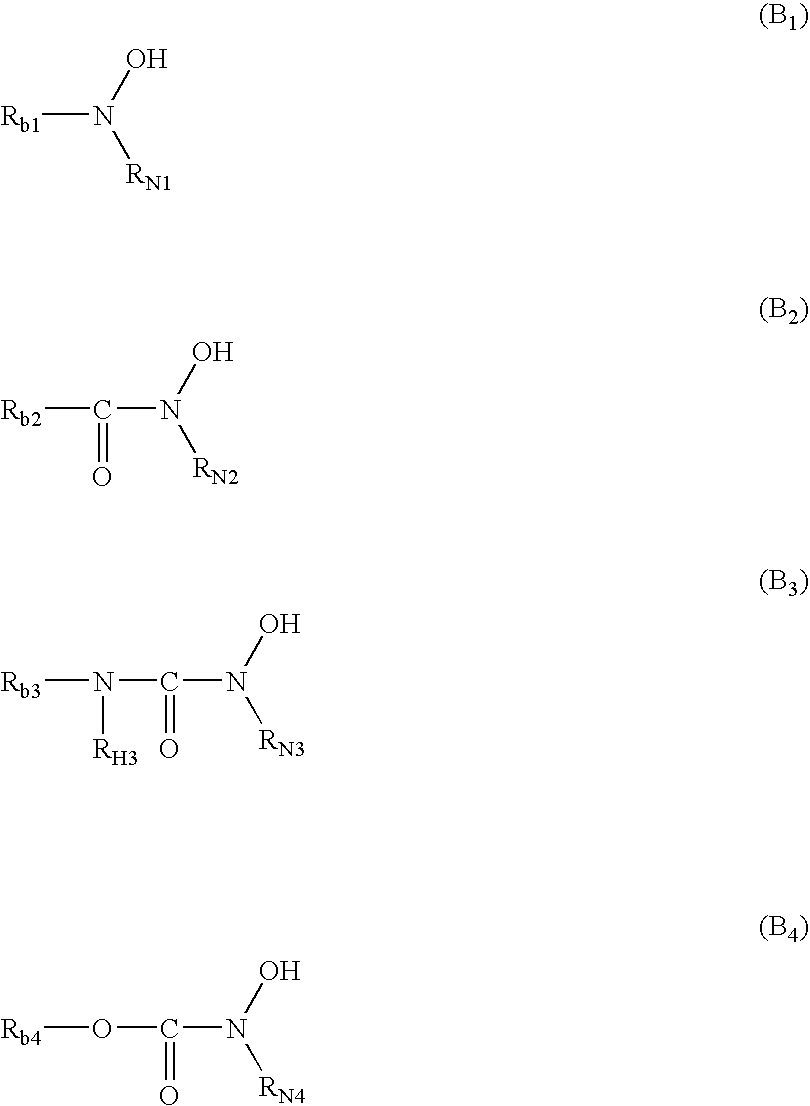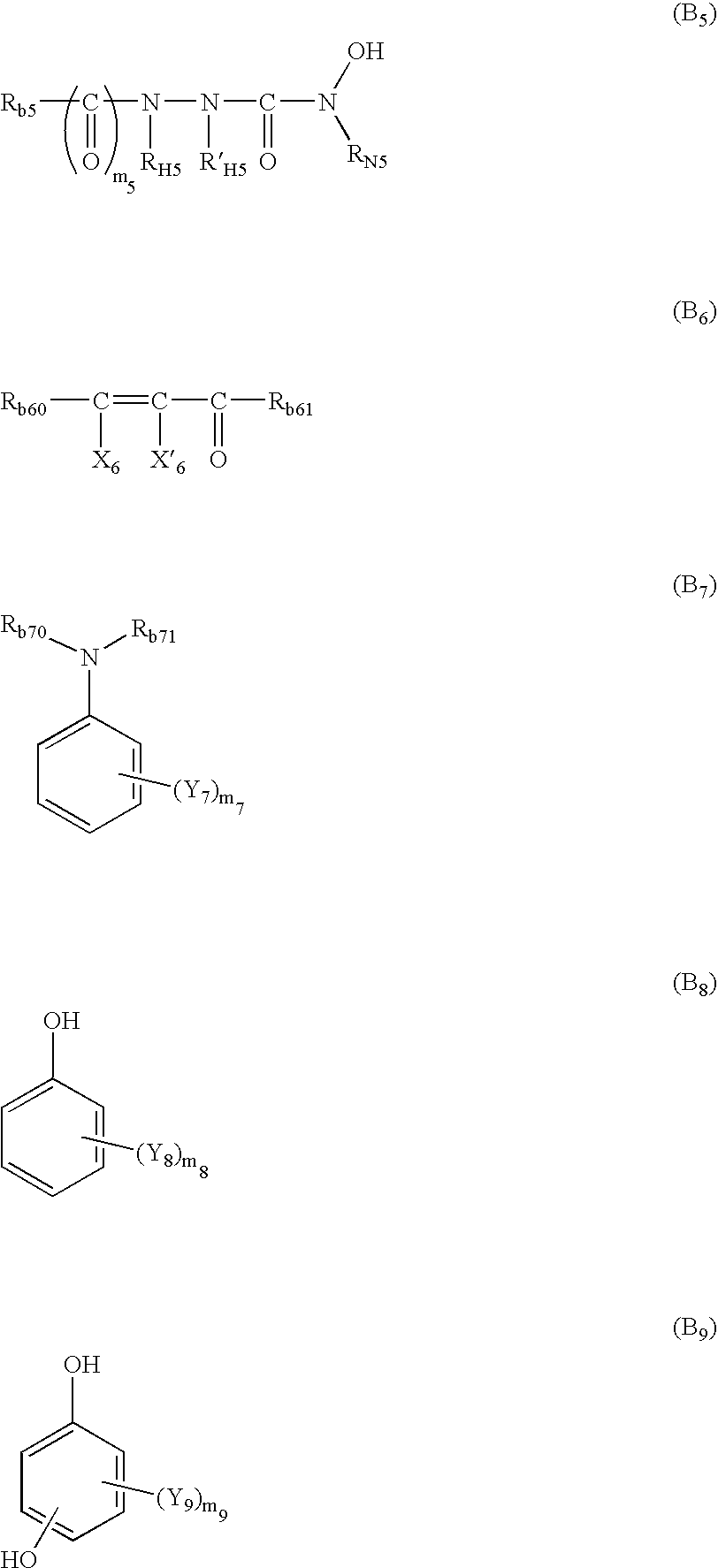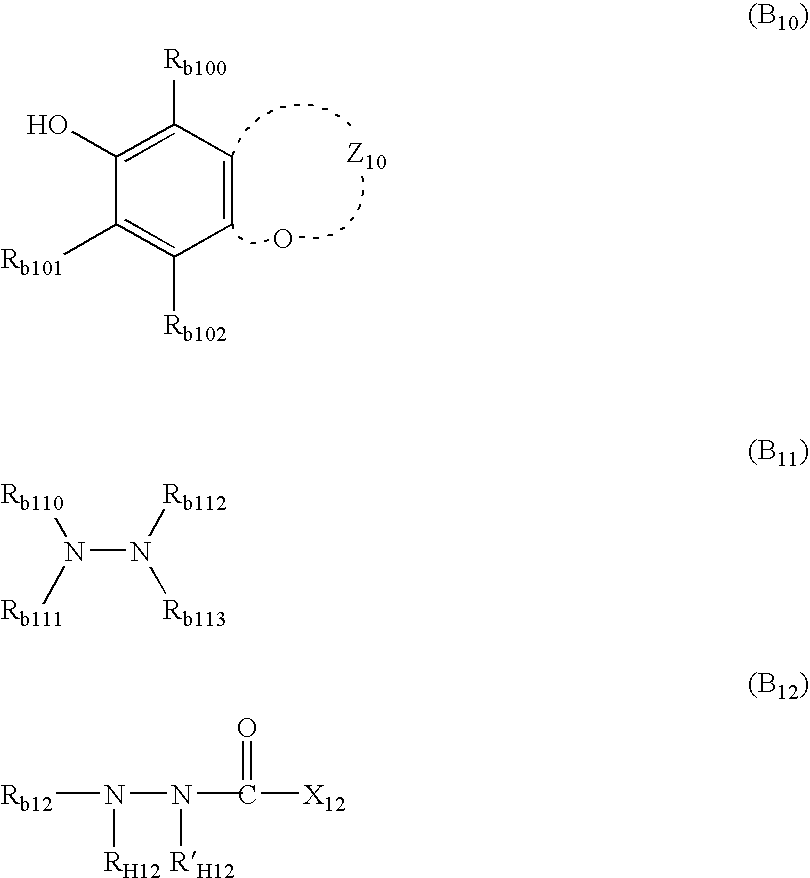Photothermographic material
a technology of photothermographic materials and photothermographic film, which is applied in the field of photothermographic film, can solve the problems of insufficient image quality of medical images in the digital imaging recording material obtained by such a general image forming system, the level at which the digital imaging recording material can replace the medical silver salt film processed by conventional wet development, and the sensitivity decline, etc., to achieve the effect of low fogging, reduced silver ions supplied from non-photosensitive organic silver salts, and low sensitivity
- Summary
- Abstract
- Description
- Claims
- Application Information
AI Technical Summary
Benefits of technology
Problems solved by technology
Method used
Image
Examples
synthesis example 1
( Synthesis of Compound P-1)
[0490] Passivation films were formed on the stainless steel surface of a polymerization vessel and on stainless steel stirring members by adding 1500 g of distilled water in the polymerization vessel of a gaseous monomer reaction apparatus (type TAS-2J manufactured by Taiatsu Techno Co.) followed by heating at 90° C. for 3 hours. Added in this polymerization vessel after this treatment were 584.8 g of distilled water, 9.70 g of a surfactant (Pionine A-43-S produced by Takemoto Oil and Fats Cp.), 20.25 g of NaOH with a concentration of 1 mol / L, 0.216 g of tetrasodium ethylenediamine tetraacetic acid, 327.6 g of styrene, 16.2 g of acrylic acid and 4.32 g of tert-dodecylmercaptan, and the mixture was stirred at 225 rpm while the reaction vessel is hermetically sealed. After purging nitrogen gas several times by evacuating with a vacuum pump, 151.2 g of 1,3-butadiene was introduced with pressurizing followed by increasing the inner temperature to 60° C. Furth...
example 1
1. Preparation of PET Support and Undercoating
1-1. Film Manufacturing
[0705] PET having IV (intrinsic viscosity) of 0.66 (measured in phenol / tetrachloroethane=6 / 4 (weight ratio) at 25° C.) was obtained according to a conventional manner using terephthalic acid and ethylene glycol. The product was pelletized, dried at 130° C. for 4 hours. Thereafter, the mixture was extruded from a T-die and rapidly cooled to form a non-tentered film having such a thickness that the thickness should become 175 μm after tentered and thermal fixation.
[0706] The film was stretched along the longitudinal direction by 3.3 times using rollers of different peripheral speeds, and then stretched along the transverse direction by 4.5 times using a tenter machine. The temperatures used for these operations were 110° C. and 130° C., respectively. Then, the film was subjected to thermal fixation at 240° C. for 20 seconds, and relaxed by 4% along the transverse direction at the same temperature. Thereafter, th...
example 2
1. Back layer
[0845] Blue dye-2 was used instead of blue dye-1, as an antihalation dye.
2. Preparation of Coating Sample
[0846] 1) Preparations of Silver Halide Emulsions
[0847] Preparations were conducted in a similar manner to those in Example 1, instead of using mixed emulsion for coating solution described below.
[0848] (Preparations of Mixed Emulsion A11 to A13 for Coating Solution)
[0849] The silver halide emulsion-1, the silver halide emulsion-2 and the silver halide emulsion-3 at the rate of (silver halide emulsion-1:silver halide emulsion-2: silver halide emulsion-3=) 5:2:3 by mol of silver were dissolved, and thereto was added benzothiazolium iodide at 7×10−3 mol per one mol of silver with a 1% by weight aqueous solution. Further, water was added thereto to give the content of silver of 38.2 g per one kg of the mixed emulsion for a coating solution, and 1-(3-methylureidophenyl)-5-mercaptotetrazole was added to give 0.34 g per 1 kg of the mixed emulsion for a coating solu...
PUM
 Login to View More
Login to View More Abstract
Description
Claims
Application Information
 Login to View More
Login to View More - R&D
- Intellectual Property
- Life Sciences
- Materials
- Tech Scout
- Unparalleled Data Quality
- Higher Quality Content
- 60% Fewer Hallucinations
Browse by: Latest US Patents, China's latest patents, Technical Efficacy Thesaurus, Application Domain, Technology Topic, Popular Technical Reports.
© 2025 PatSnap. All rights reserved.Legal|Privacy policy|Modern Slavery Act Transparency Statement|Sitemap|About US| Contact US: help@patsnap.com



